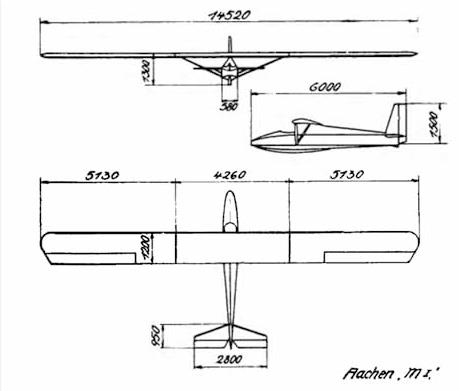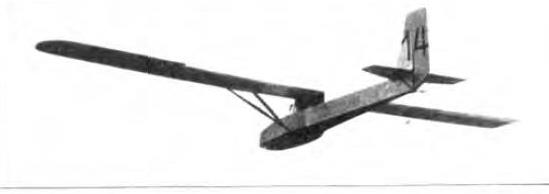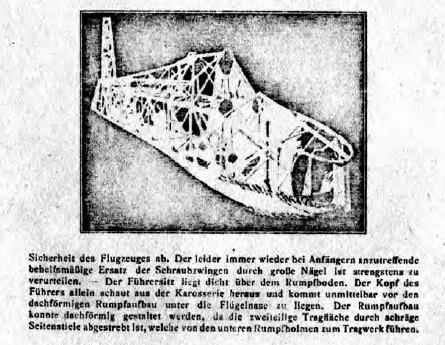B
The "MI" was a high-wing strutted in a simple design because it was intended as a training glider. This machine was only slightly inferior compared to the advanced gliders. The design was proved to be suitable.for club work shops. Hermann MAYER, very close but not a member of the FVA Aachen group, designed a training and performance glider: the MI. He successfully participated in the 1929 Rhön competition, with competition number 14 (registered by the Luftfahrtverein Aachen eV).
The "Flugsport" 1929, Heft 16 reported about this aircraft:
"It was intended in the design to create a not too difficult to fly and advanced students, good sail-performance training aircraft (hence limitation in the span, robust construction), which should come close in his performance the " Professor "type without to essential exceed the cost of the "Prüfling" .
The hull is planked from front to rear spar with plywood, the rear covered with fabric.
The wing has three parts with a continuous profile (Göttingen 535), the center piece is braced by V-struts.
The ailerons are designed with torsional plywood nose, thereby achieved that most diagonals could be omitted. This promotes the rudder center of gravity in the vicinity of the axis of rotation and the risk for vibration of the rudder is greatly reduced.
Summary story 1929, Hermann MAYER, very close but not a member of the FVA Aachen group, designed a training and performance glider: the MI. He successfully participated in the 1929 Rhön competition, with competition number 14 (registered by the Luftfahrtverein Aachen eV).
| Type |
Single seat glider |
| Dimensions |
Length 6 m , height 2 m , span 14,5 m , wing area 17 m2 ,, wing profile Göttingen 535 |
| Weights |
Empty 118 kg, loaded , max. take off weight |
| Performance |
Max.. speed , cruising speed , range , endurance , service ceiling , climb |
| Type |
Werk.Nr |
Registration |
History |
|
|
14 |
Built by the Segelfliegergruppe des Luftfahrt-Vereins Aachen in 1929 |




